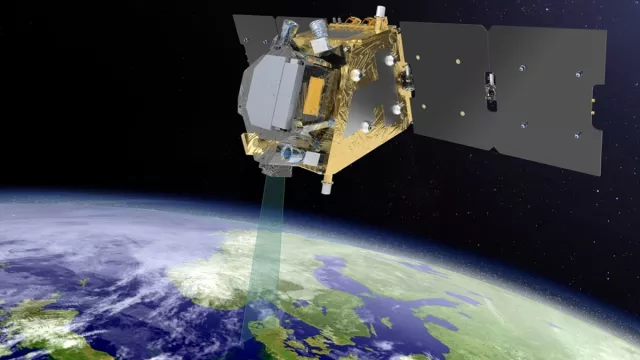The European FLEX mission will employ a specialized spectrometer to study the ‘glow’ of plants produced by the process of photosynthesis for the first time from orbit. This ambitious science mission is planned for 2026.
Key information
| Mission | Map plant fluorescence to gain new insights into the process of photosynthesis |
|---|---|
| Domain | Earth observation |
| Launch date | 2026 |
| Partners | ESA |
| Lieu | Sun-synchronous 814-km polar orbit, in tandem with Sentinel-3 |
| Lifetime | At least 4 years |
| Status | In development |
Key figures
- 300-m spatial resolution
- 500-780-nm wavelength range
- 0.3-nm spectral resolution
- 9 contributing French laboratories
Key milestones
- 2026: Scheduled launch
- 10 January 2019: ESA selects Thales Alenia Space as satellite prime contractor
- 2016: ESA tasks Leonardo (Italy) with development of the spectrograph
- 19 November 2015: ESA selects FLEX for its in-orbit technology demonstration programme
Project in brief
FLEX (FLuorescence EXplorer) is ESA’s eighth Earth Explorer orbital technology demonstration mission and was selected in 2015.
FLEX will employ a specialized spectrometer to measure fluorescent light from vegetation produced by photosynthesis. The mission—a world first from space with ambitious science goals planned for 2026—aims to generate global maps of this ‘glow’ from land surfaces and coasts with a spatial resolution of 300 metres and a 27-day repeat cycle.
The faint glow from chlorophyll is given off by photosynthesis as plants convert carbon dioxide into molecular chains of carbon using the energy from absorbed photons. Quantifying photosynthesis by observing this glow is the aim of FLEX’s main instrument, FLORIS (FLuORescence Imaging Spectrometer), designed by the Leonardo consortium, which will sense light in a frequency band between 500 and 880 nanometres.
Science teams are studying plant fluorescence with a view to gaining a better overall picture of how photosynthesis affects the way carbon moves between vegetation, the atmosphere and the water cycle.
FLEX’s readings will be correlated to those from the European Sentinel-3 satellite, with which it will operate in tandem to gather information on the state of the atmosphere and extract the glow from the ambient background, and to provide unique environmental context through its optical and thermal sensors.
The mission’s precise science goals are to:
- Qualify fluorescence measurements for studying photosynthesis and compare them to other methods
- Understand temporal and spatial variations and compare them with more precise field measurements
- Identify and characterize the effects of different types of stress—like water stress, heatwaves, cold and wind—on plant fluorescence and photosynthesis
- Open up new avenues and applications for observation of plant fluorescence, notably for agriculture
The FLEX satellite will be assembled by Thales Alenia Space. Weighing 460 kilograms, it will be dual-manifested for launch on Europe’s Vega C vehicle from the Guiana Space Centre in 2026.
CNES’s role
CNES has been involved in the project from the outset, notably supporting the research laboratories contributing to the mission. The LMD dynamic meteorology laboratory is leading science efforts on the topic in France, working alongside several other French laboratories (LSCE, ESE, CESBIO, INRAE, CNRM, OHP, IMBE and LEMP).
Contacts
Continental Biosphere subject matter expert
Philippe Maisongrande
E-mail: philippe.maisongrande at cnes.fr


